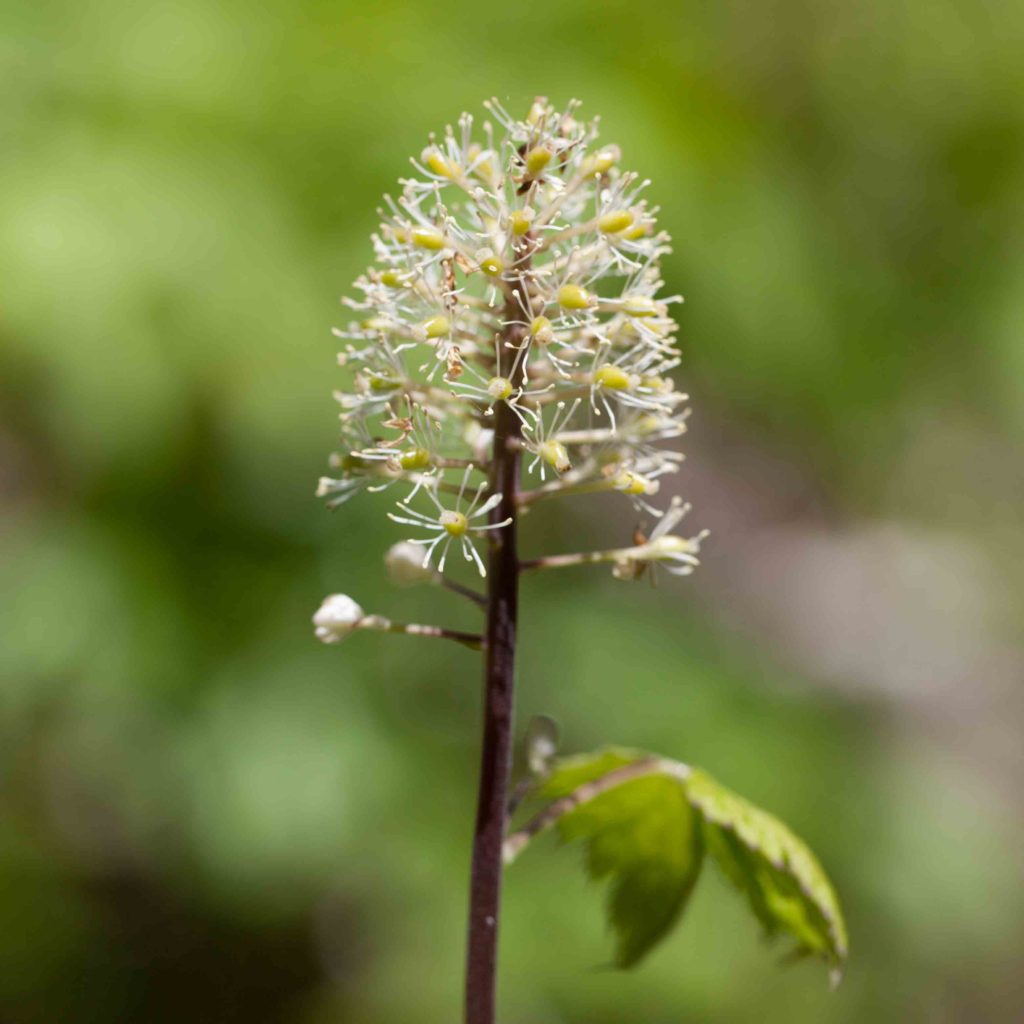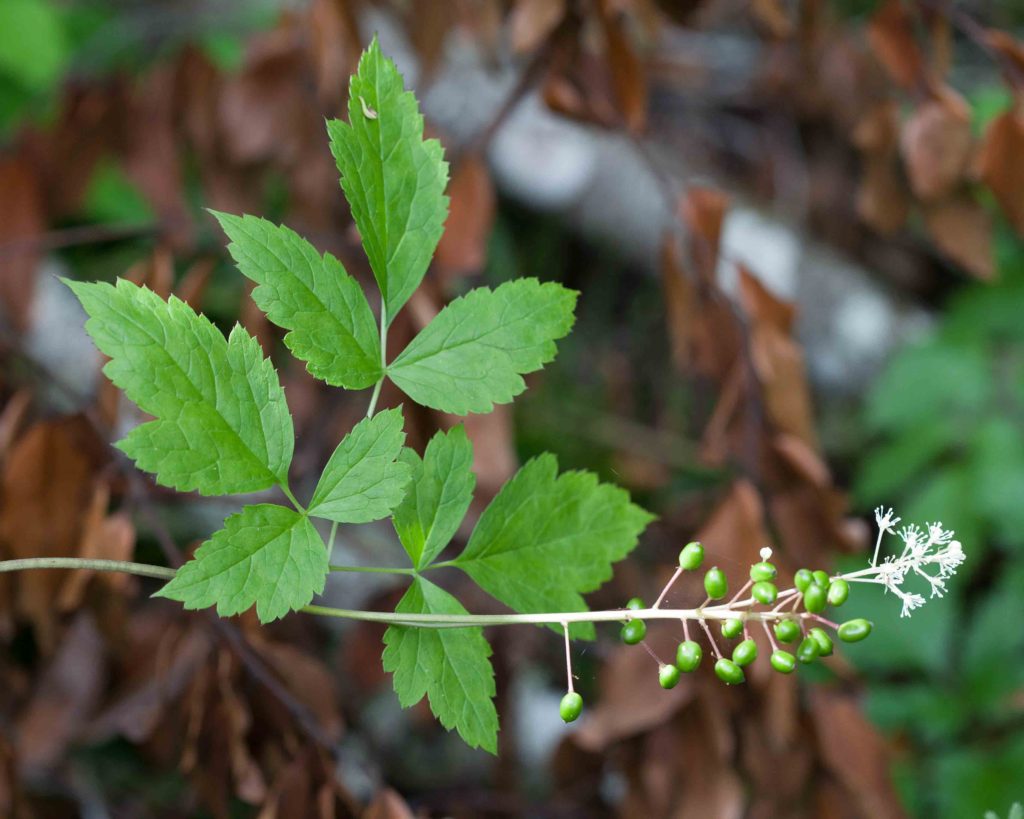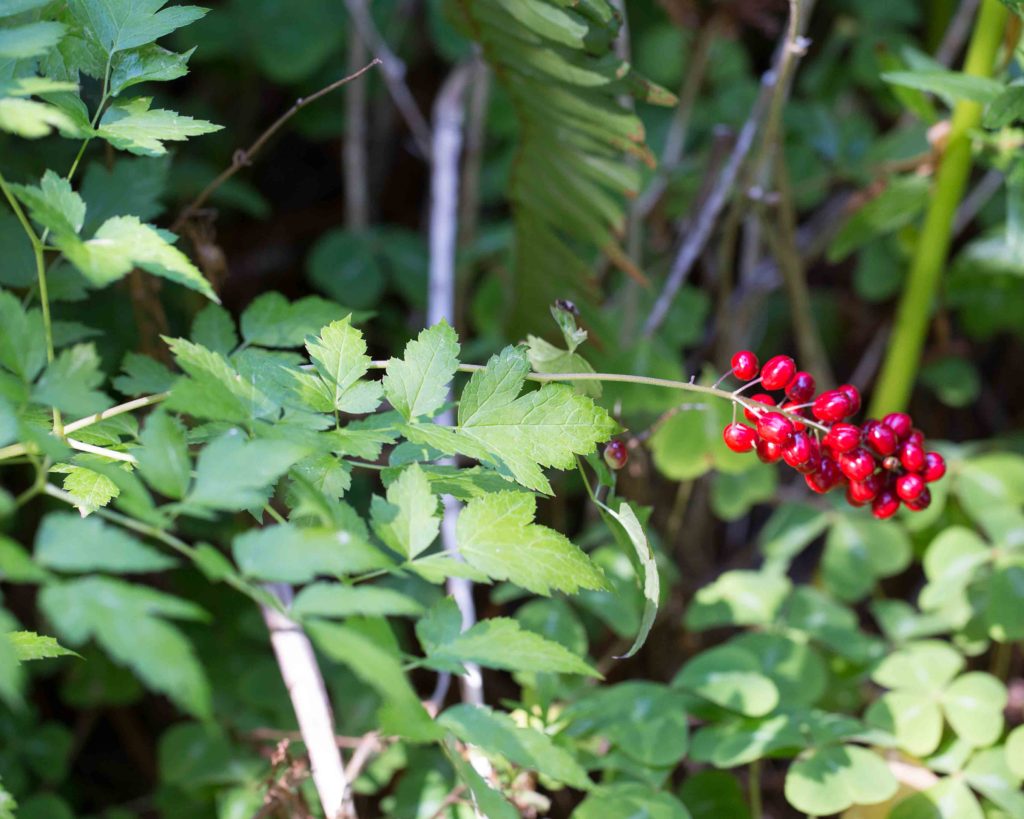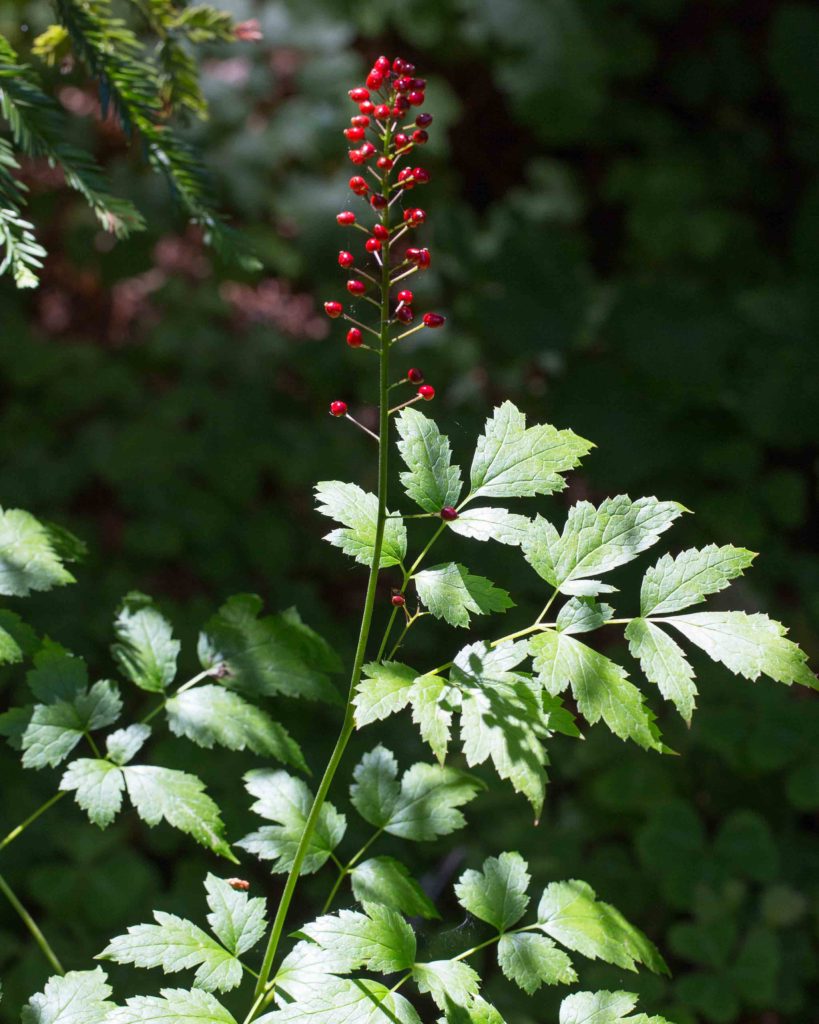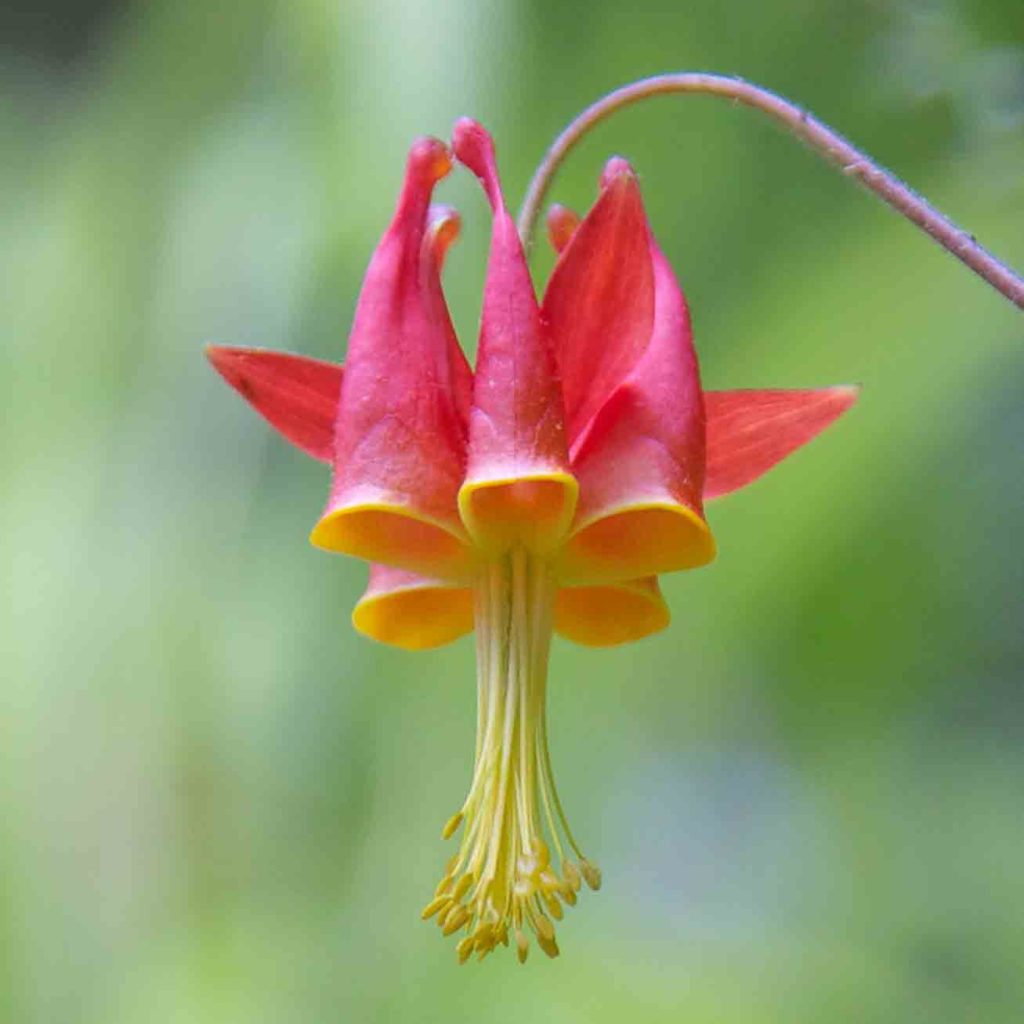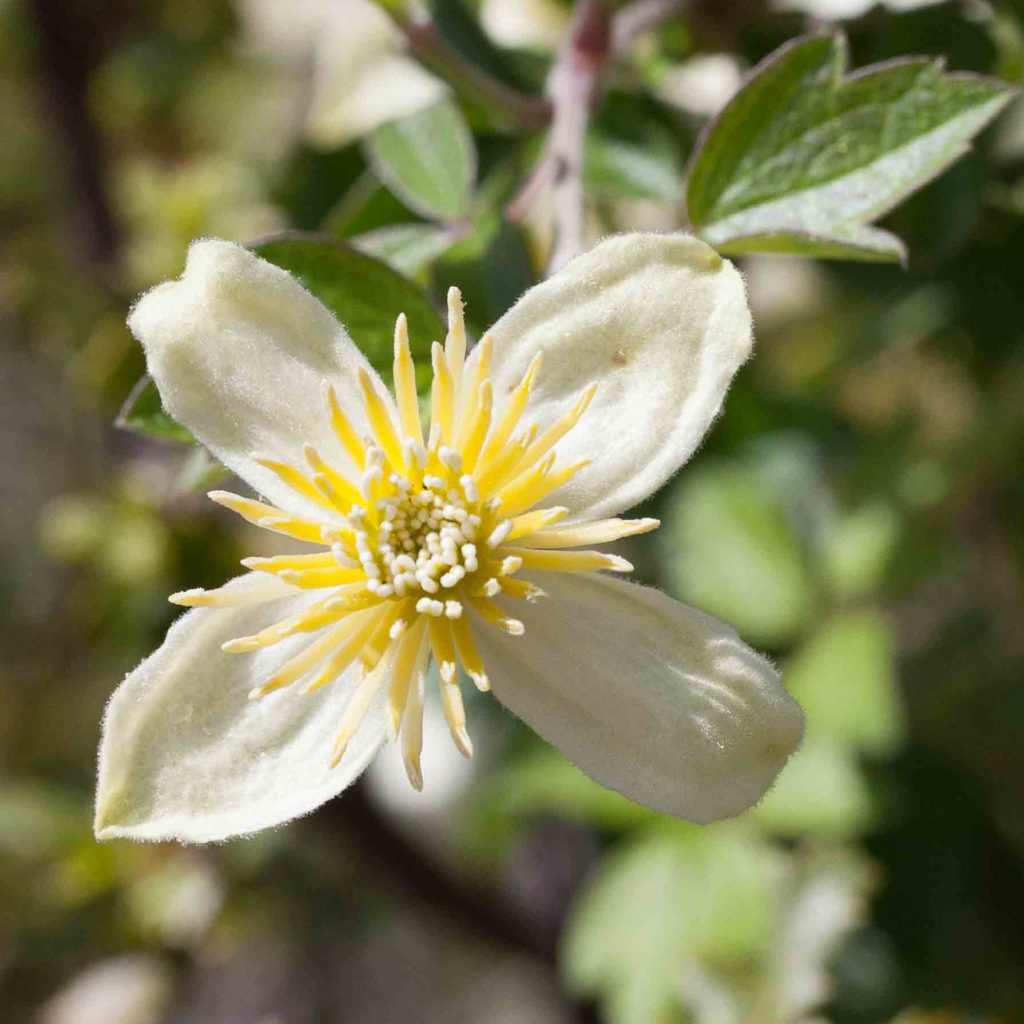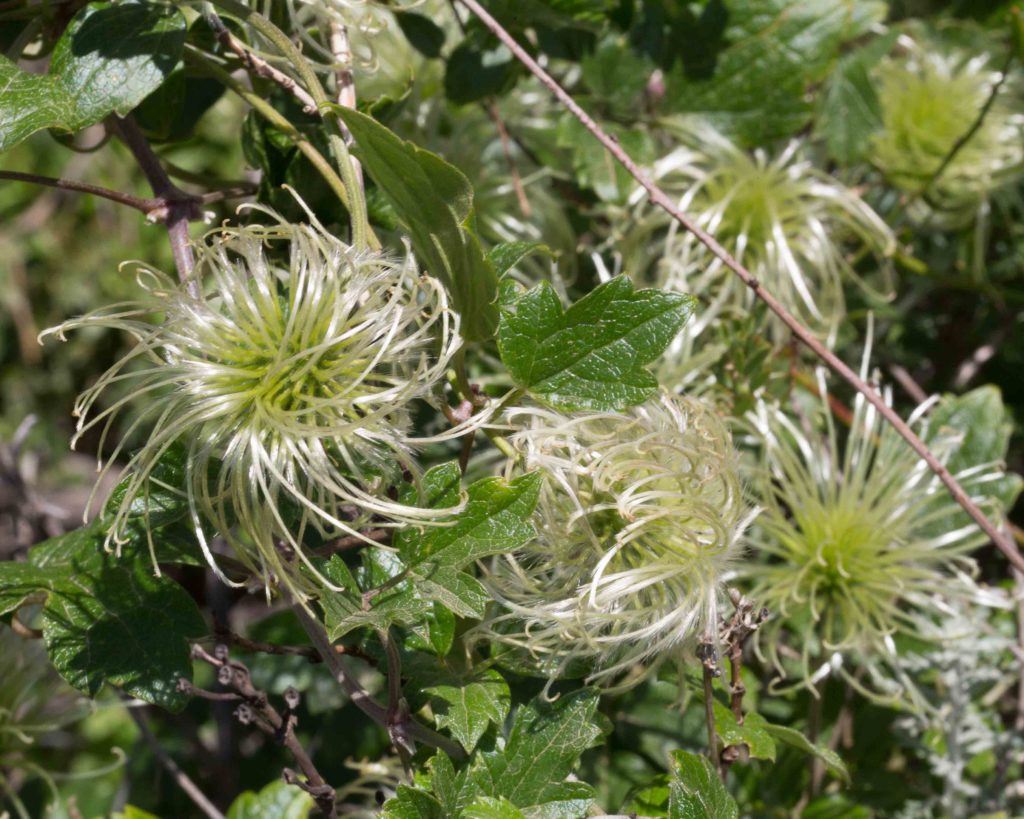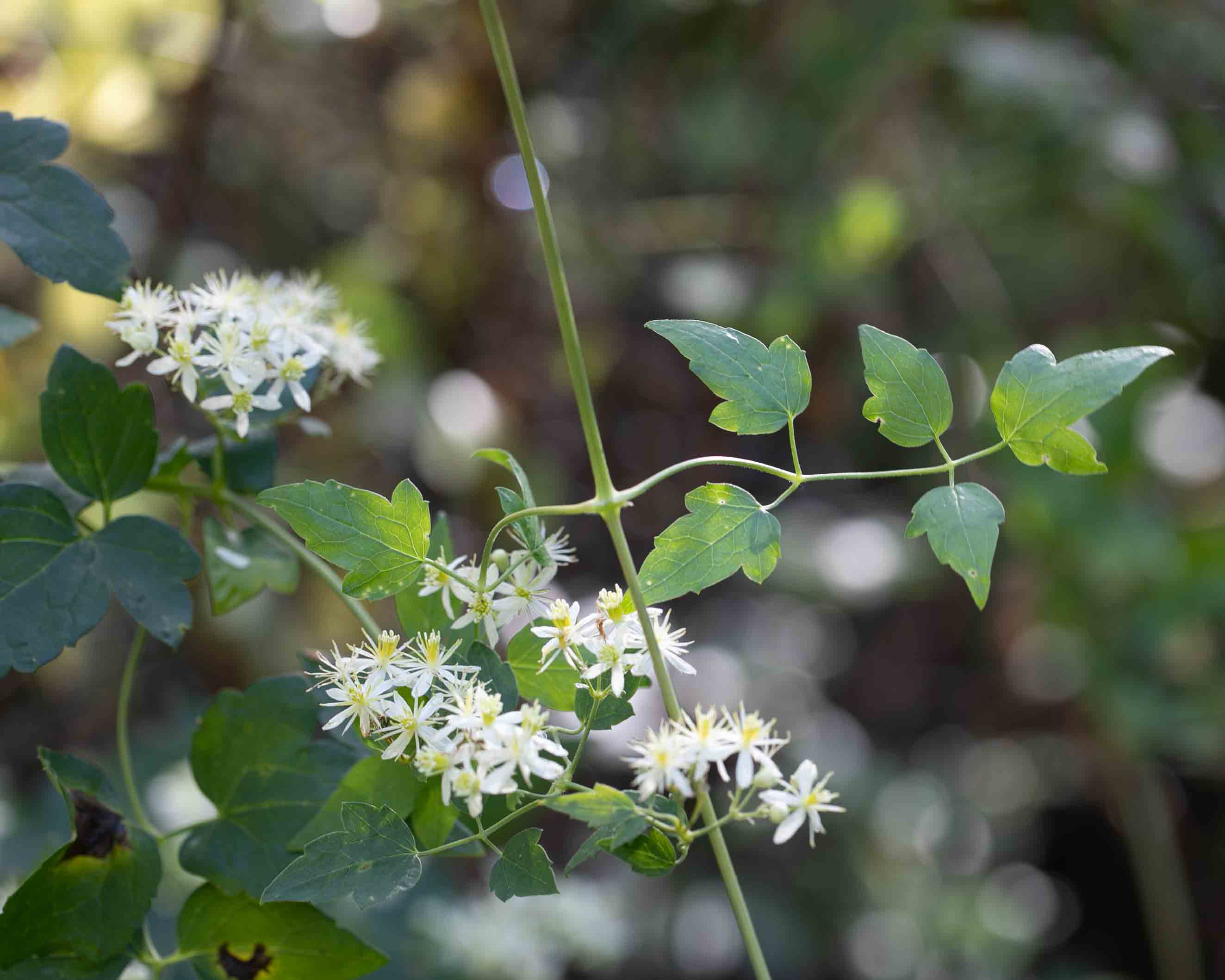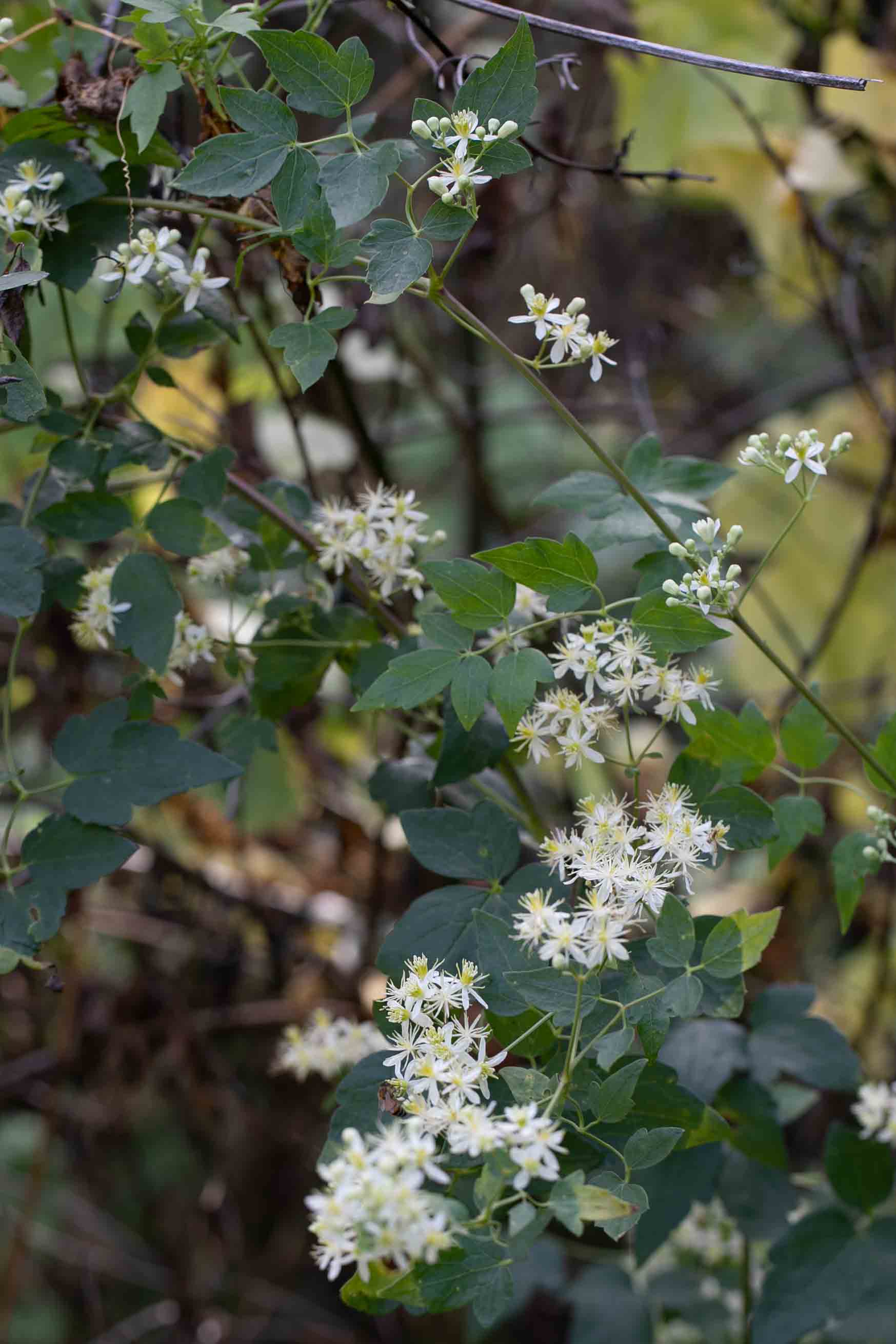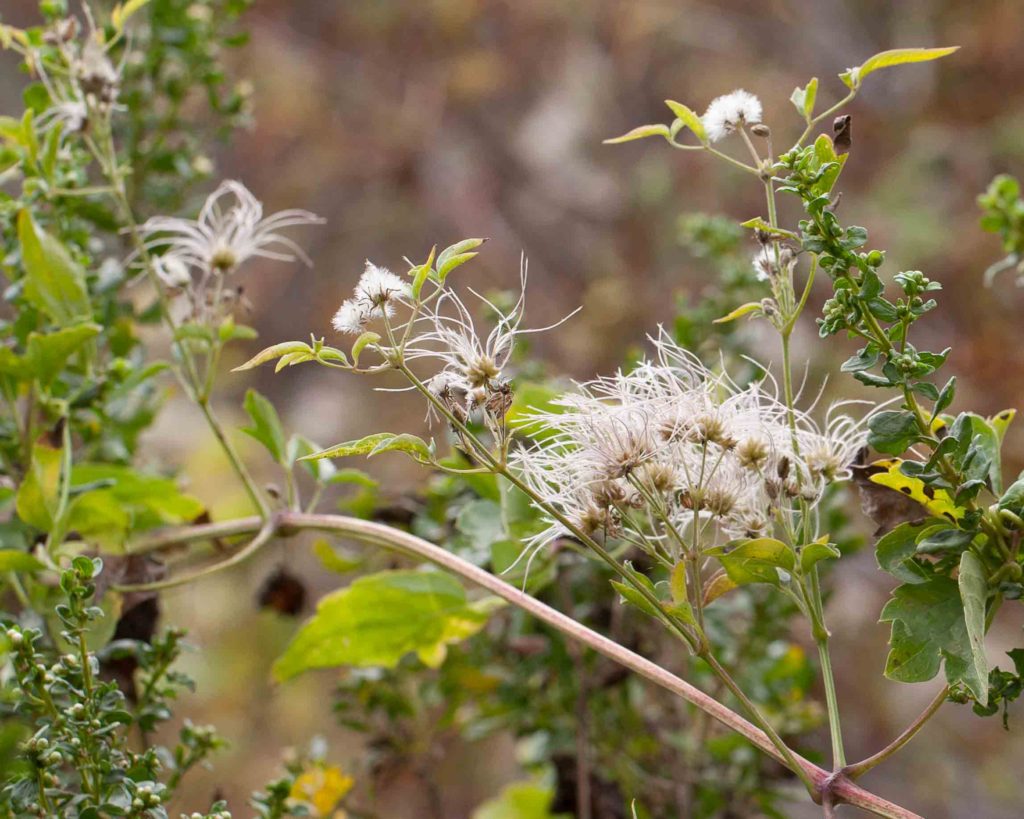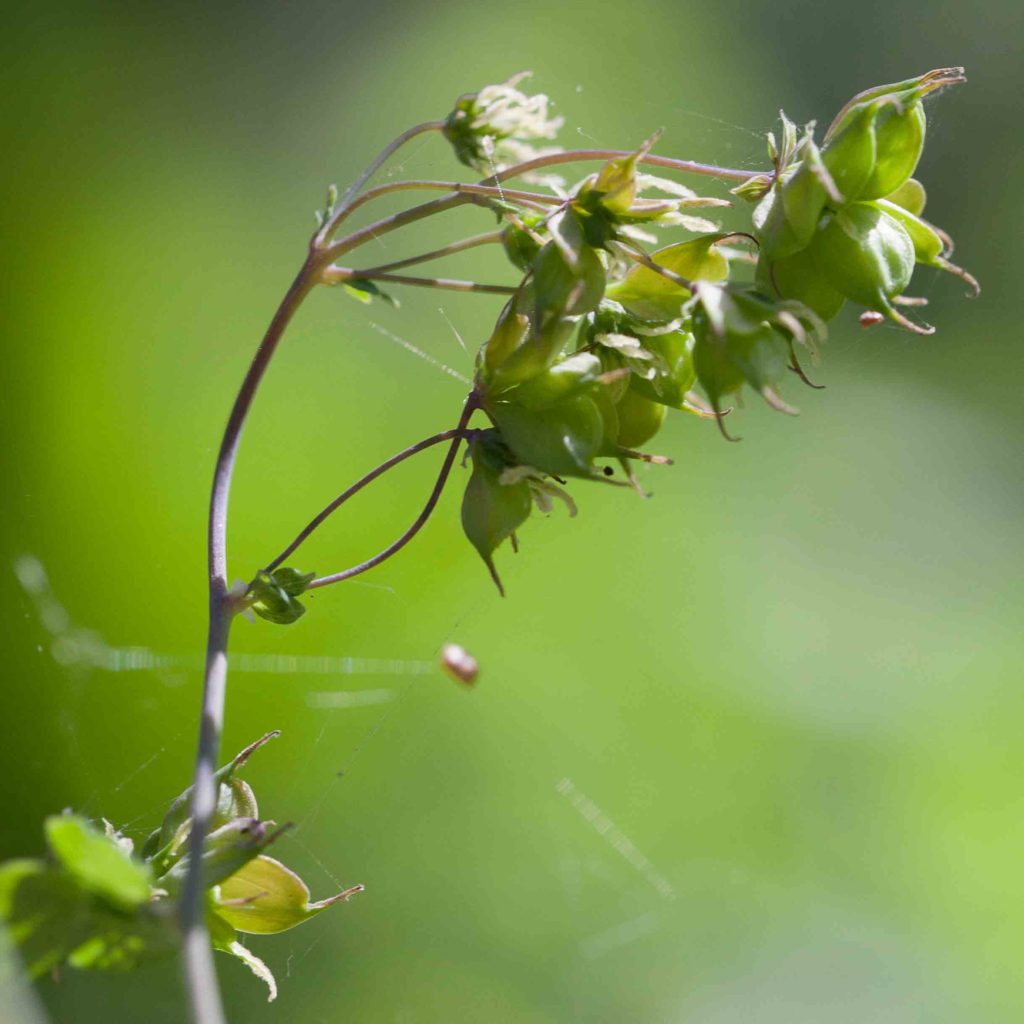Ranunculaceae: Buttercup Family — Various (other than Larkspur and Buttercup)
The buttercup family has a wide variety of plants, but most of them have leaves with 3 lobes, or in groups of 3.
Baneberry – Actaea rubra
Blooms:
May–Sept
Plant Height:
20–100 cm
Flower Size:
Medium cluster
Origin:
Native
Habitat:
Rich moist woods, generally near streams
Notes:
This is an erect, several-stemmed plant with clusters of small, star-shaped flowers. In the fall, they become red or white berries. The stems are leafy, the lower leaves 2–3 ternate (in groups of 3), the upper leaves 1–2 ternate. Leaflets are lanceolate to broadly ovate and serrated.
NOTE: the fruits are toxic to humans.
Crimson Columbine – Aquilegia formosa
Blooms:
Apr–Sept
Plant Height:
20–80 cm
Flower Size:
Large
Origin:
Native
Habitat:
Moist places
Notes:
This dramatic flower is unmistakable. Each of the 5 spurred petals forms a long, hollow tube, slanting backwards from the pendulous, golden yellow stamens. Petal blades are 1-7 mm, forming the lowest, long yellow portion of the tube. Between the spurs are petal-like spreading sepals. Leaves are deeply 3-lobed. The lower leaves are long-stemmed, the upper short-stemmed. Photos #2 – 3 by CJH.
Chaparral Clematis / Old Man’s Beard – Clematis lasiantha
Blooms:
Jan–June
Plant Height:
Vine
Flower Size:
Large
Origin:
Native
Habitat:
Chaparral, open woodland
Notes:
There are two clematis found in the county. This one flowers much earlier, and produces its flowers singly, rather than in clusters. It grows vigorously, and can cover entire tree tops. The individual flowers have no petals, but 4 broad, 1–2 cm long, petal-like sepals and 50–100 stamens, which are much shorter than the sepals. The fruits are hairy, making a spectacular display and recalling a straggly beard. There are 3–5 leaflets, broadly ovate and more or less 3-lobed. Photo #4 by CJH.
Western Virgin’s Bower – Clematis ligusticifolia
Blooms:
June–Sept
Plant Height:
Vine
Flower Size:
Medium
Origin:
Native
Habitat:
Moist places, many communities
Notes:
There are two clematis found in the county. This one flowers much later, and produces its (smaller) flowers in clusters. The individual flowers have no petals, but 4 or 5, < 1 cm long, petal-like sepals. The stamens are about as long as the sepals. There are 5–15 leaflets, lanceolate to lance-ovate. The fruits are hairy, similar to those of Chaparral Clematis (Clematis lasiantha, see above), but are more variable, either looser or denser.
Many-fruited Meadow-rue – Thalictrum fendleri var. polycarpum
Blooms:
Mar–June
Plant Height:
60–200 cm
Flower Size:
Medium cluster
Origin:
Native
Habitat:
Moist places, near streams or in meadows or woodland
Notes:
An attractive although rather inconspicuous plant. Leaflets are wedge-shaped to round, crenate or lobed. The plant is generally dioecious, male and female flowers borne on separate plants. The male flowers are small but striking, with a pendulous, greenish-purple, bell-shaped inflorescence with multiple stamens and large anthers. Female flowers are in clusters with long-exserted styles. Fruits are compressed near the margins.
